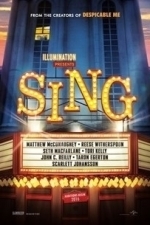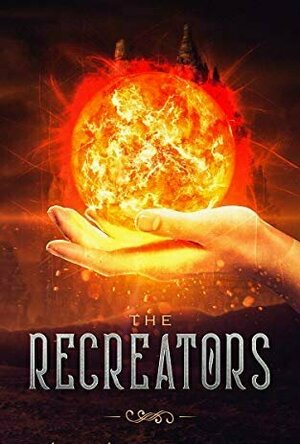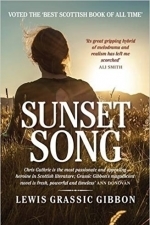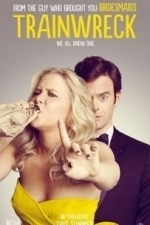Movie Metropolis (309 KP) rated Sing (2016) in Movies
Jun 11, 2019
Here, the company behind that second film, Illumination Entertainment, try to get the genre right with Sing. But are we looking at the next superstar of the animated genre?
Koala Buster Moon (Matthew McConaughey) presides over a once-grand theatre that has recently fallen on hard times. An eternal optimist, he loves his work enormously and will do anything to preserve it. Facing the crumbling of his life’s ambition, he takes one final chance to restore his fading jewel to its former glory by producing a singing competition, with eternal glory facing the winner.
There’s an impressive roster of talent on offer in Sing, something that parents will no doubt enjoy slightly more than the offspring they no doubt have to bring with them. With Matthew McConaughey taking the lead role, Taron Egerton, Reese Witherspoon, Scarlett Johansson and Seth McFarlane to name a few all lend their voices. There’s even a role for Brit-favourite Jennifer Saunders as a grumpy old sheep, it’s not ground-breaking, but it’s immensely likeable stuff.
Illumination Entertainment has brought us the brilliant Despicable Me franchise as well as its ridiculously successful spin-off Minions, but they’ve been criticised heavily for relying too much on the funny yellow critters to cash their paycheques. Thankfully, bar the now infamous company logo, the tic-tac shaped creatures are nowhere to be found and Sing is a vastly entertaining movie, in spite of their absence.
Whilst it’s true that the animation lacks the depth or fluidity of offerings from Pixar, Disney, and Dreamworks, there is a certain charm to its simplistic colour palate that children will find endearing. The plot is woefully unoriginal but director Garth Jennings, in his first animated feature, utilises that well, cleverly referencing the many talent shows that feature on our television screens – including those we are sick of.
There are some moral lessons in here too. Tori Kelly’s stage-shy elephant Meena has a great story arc that sees her face her fears and embrace her talents, whilst Taron Egerton’s gorilla Johnny stands up to his criminal father and learns that a life of crime doesn’t always pay.
In fact, only Seth MacFarlane’s obnoxious mouse Mike fails to make an impact on the plot, with his berating of an asthmatic sheep in the cleverly produced opening sequence coming across a little crude in comparison to the rest of the script.
Overall, Sing is a great film to hold the kid’s attention as we approach the half-term holidays. It would be easy to criticise it for lacking an original story, but there’s more to offer here than a half-baked plot. It’s beautifully voiced and reasonably well animated. Illumination Entertainment may not have topped Zootopia, but this is their best offering outside of Despicable Me by a country mile.
https://moviemetropolis.net/2017/01/28/fun-for-all-the-family-sing-review/

Open English
Education
App
The Open English iOS app! Open English is now with you wherever you go. The Open English App allows...

Karate Girl vs. School Bully
Games and Entertainment
App
~~> Poor Sophie has been bullied for too long! She’s got to learn to stand up to the school bully!...
Heather Cranmer (2721 KP) rated Storms of Malhado in Books
May 18, 2020
I felt that the plot for Storms of Malhado was fairly original. The reader is taken through three different points in time starting in 1900 with Suzanne's story, followed by 1961 with Betty's story, and then to 2008 with Katie's story. We learn of how each woman is with a man that is slippery and unobtainable yet each woman yearns to make the relationship work. Each story leads up to a horrible hurricane from each year. What will each woman sacrifice for love, and will it lead up to their demise? Storms of Malhado is full of life lessons, the strongest being that those who don't learn from the past are doomed to repeat it. There is so much symbolism throughout this novel which I didn't catch some of it until I finished reading and reflected back on what I had just read. Sandovici does a fantastic job at painting a beautiful picture of what life was like for each woman. It's easy to get lost in the narrative and forget you're only reading about the characters instead of living their life! The only thing about the plot that lets it down a little is the ending. It just felt a bit messy and confusing. I can't go into great detail because of spoilers. The ending, while I believe in what happened, just seemed a little far fetched and a little too neat if that makes sense. Three people experiencing the same thing at the same time and calling each other by different names, well, it just seemed kind of out there. I wish I could go into more detail, but I really don't want to give too much away. However, all loose ends are tied up by the end of book, and it becomes obvious how all three narratives within Storms of Malhado are related.
The majority of the characters in Storms of Malhado were well fleshed out and very realistic feeling. I enjoyed reading about Suzanne, Josephine, and Desmond. Suzanne was an interesting character to read about, but there were times she made me angry especially towards her ending. I could actually feel how much she loved and longed after Desmond. I just felt that she could be a little selfish at times. However, I feel that we've all been a little selfish when it comes to love. I could really feel how much Josephine loved Suzanne and wanted the best for her. Josephine was such a great character! Betty, Edna, and Cornelius also had an interesting story line. I felt like I connected with Betty the most. I could feel her frustration with Carl seeping through the pages as well as how much she wanted Cornelius no matter how frustrating he was. I loved Edna the most though, and it made me wish I had an Edna in my life to care for me and be there for me. Betty seemed to not have her head in the clouds as much as Suzanne did which was nice. The narrative I felt that was a little underdeveloped was that of Katie, her boyfriend George, and her mother. We don't get to read much about them until the very end. I would have liked more insight into George and Katie's relationship before the storm hits. The reader gets all this backstory into Suzanne's and Desmond's relationship as well as Betty's and Cornelius' relationship, yet there isn't much back story for Katie and George. All of a sudden towards the ending, we are told that Katie and George have a rocky relationship. I wanted to know why it was so rocky instead of just little bits and pieces. Katie's and George's relationship just felt like it was missing so much. The relationship between Katie and her mother also felt lacking. If her relationship was a strong with her mother as the relationship between Suzanne and Josephine as well as the relationship between Betty and Edna, it did not come across that way in the book. Katie's relationships just felt rushed.
Trigger warnings for Storms of Malhado include infidelity, adultery, alcohol use, death, drug use, some light profanity, and sexual situations (although not graphic).
All in all, Storms of Malhado is a highly interesting read that will leave you hooked on each and every word. It grabs you by the hand and doesn't let go until the end. With fantastic writing, a highly interesting plot, and entertaining characters, Storms of Malhado is a must read. I would definitely recommend Storms of Malhado by Maria Elena Sandovici to those aged 16+ who are after a book that will leave them thinking about it long after they are done reading it.
--
(A special thank you to Lone Star Literary Life and Maria Elena Sandovici for providing me with a paperback of Storms of Malhado in exchange for an honest and unbiased review.)
Ivana A. | Diary of Difference (1171 KP) rated The Recreators in Books
Feb 3, 2020
<img src="https://diaryofdifference.com/wp-content/uploads/2019/04/New-blog-banner-24.png"/>;
I went into reading this book partially blind. The blurb doesn’t uncover much, and I was excited as to whether I would like it or not. The Recreators is a young-adult novel that happens in Medieval times and features characters who have God-like powers and are able to change a slight minimal portion of the world.
We follow three separate stories throughout this book:
<b><i>Filia’s story</i></b>
A princess who has disappeared and comes back years later to claim her throne. A fierce woman who is a Recreator, but chooses to use the powers for her own benefit. In this story we can see how Filia develops as a character, changes while learning new things, makes sacrifices and answers some of the most asked social questions… A powerful story of growing up, and definitely my favourite one of all three.
<b><i>Vepresila’s story</i></b>
She is chosen by the Goddess to serve her, but decides to take destiny in her own hands. This girl grew up with her family in a tribe with different moral and cultural values than what we know. Men and women don’t sleep under the same roof, and boys have to pass tests to become men, otherwise, they are stuck and disrespected. When the girl is chosen to go to the Goddess’ temple and serve her, she realises that the system doesn’t work, and tries to beat it. Finding her own destiny can prove to be a bouncy road, but she goes for it.
<b><i>Simmiolas’s story</i></b>
He is a Recreator and comes back to fixes a mistake he made in the past. While he travels, he settles with a circle of people, but they fail to believe he has powers and he doesn’t seem able to change their views on how they see nature and the world. Taking a dear friend with him, he is set on a mission to do what is right, before it is too late.
<b><i>'’Just because things don’t always go as planned, it doesn’t always mean the outcome will be for the worse.’’</i></b>
These three stories feature these three different characters, with a lot of characters surrounding them and supporting them. The three stories connect each other at a few points, some sooner, some later. They never fully connect though, which did bother me, as I was expecting a one big ending. The three stories remained separated, which made me think if it would’ve been better to not connect them at all, or create three separate books for them.
<b><i> ‘’But if all places have different ideas about what’s right and wrong, how do we know what really is right and wrong?’’</i></b>
Despite the story lines and the grammar errors I encountered, this book was truly amazing and I really enjoyed reading it. I loved the concept of the powers, loved the ethical lessons throughout the book, and I absolutely loved watching all of these characters grow in their own kind of way.
There were amazing scenes of what is wrong and right, what fear is and how to overcome it, how to keep going despite making mistakes in the past, and a lot of various life lessons worth reading. I recommend this book if this seems like the genre you might enjoy reading. It was the first book
I read by Desiree Nordlund and I can’t wait to read more books written by her.
<b><i>‘’The best way to cure fear of the unknown is to admit what caused the fear and watch it until it’s no longer something strange.’’</i></b>
<a href="https://diaryofdifference.com/">Blog</a>; | <a href="https://www.facebook.com/diaryofdifference/">Facebook</a>; | <a href="https://twitter.com/DiaryDifference">Twitter</a>; | <a href="https://www.instagram.com/diaryofdifference/">Instagram</a>; | <a href="https://www.pinterest.co.uk/diaryofdifference/pins/">Pinterest</a>;
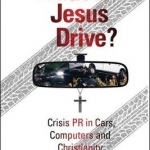
What Did Jesus Drive?: Crisis PR in Cars, Computers and Christianity
Book
What Did Jesus Drive, Is mostly about crises in the car industry, but then it's so much bigger! It's...

Easy To Use - Microsoft Word Edition
Productivity and Education
App
Microsoft Word is the World's Favourite Word Processing Software and is today used by millions...

All Islamic Audio Stories Muslims Free
Book and Lifestyle
App
Get the largest collection of free All Islamic audio stories Muslims for your phone or tablet. Read...
Eilidh G Clark (177 KP) rated Sunsett Song in Books
May 14, 2017
Gareth von Kallenbach (980 KP) rated Trainwreck (2015) in Movies
Aug 6, 2019
Trainwreck is the story of Amy Townsend (Amy Schumer). A career non-monogamist who kind-of/sort-of has a steady boyfriend, but she also happens to have her fun on the side. Having taken life lessons from her philandering father (Colin Quinn), Amy is all about having fun. She really is what the title of the movie suggests. But what most people don’t understand is that her commitment phobia really stems from her thinking she could never have the type of life and relationship that others, like her sister, have. She is rude, crude and never going to fall in love. Until she meets Aaron Connors (Bill Hader). Amy works for S’Nuff, a men’s magazine that is all about the outrageous stories, such as “How to Masturbate in the Workplace”. Another staffer pitches a piece about Aaron, a sports doctor who has recently developed a new surgery technique that would reduce downtime from knee surgery by half. Amy, being a non-sports fan and having just split with her kind-of/sort-of boyfriend, gets assigned the piece and ends up falling into bed with him and the sparks begin to fly. What could go wrong when a pot-smoking commitment-phobe meets her match and begins to fall in love?
Chock full of cameos, this movie is magic from start to finish. Bringing Schumer’s special brand of comedy to the big screen is no easy task, but it works. Schumer and Hader have such a great chemistry, it makes their relationship seem plausible – the responsible doctor and the slacker magazine writer. From start to finish, the film has great timing in both the comedic moments, and the sadder moments. The supporting cast was tremendous as joining Firth are Tilda Swinton as Amy Schumer’s eccentric boss, Brie Larson as her sister, Mike Birbiglia as her brother-in-law, not to mention Ezra Miller, Lebron James, and various other athletes and stars, including 6 current and past Saturday Night Live cast members. Quick note: I am not a Lebron James fan at all. I have personal opinions about the moves he has made, more the way he has made them, but he was superb in this film. He really can act well enough for the part at hand, and I wouldn’t be surprised if you see him in more roles in the future. You know, after his NBA career ends.
All-in-all, if you are a fan of Amy Schumer. Go see this movie. If you are looking for a great date-night movie. Go see this movie. If you are looking to laugh and some good, and at times inappropriate, humor… go see this movie. I can’t stress it enough. You will not regret it.
